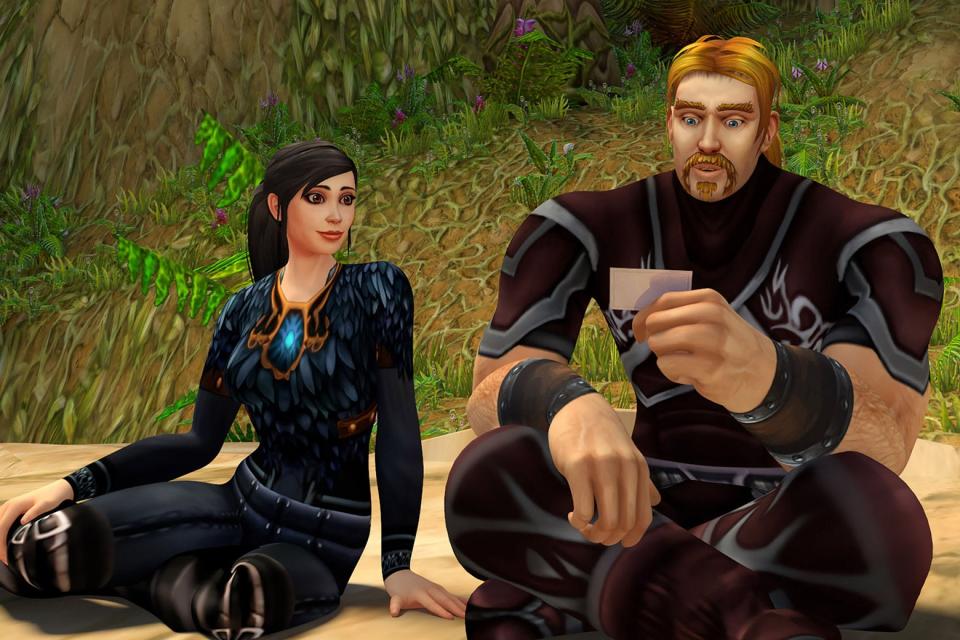The Best Sundance Movies to Watch at Home
- Oops!Something went wrong.Please try again later.
Although it’s been the case every year since 2021, it doesn’t seem to have sunk in for many people that you can stream the majority of the Sundance Film Festival’s lineup without making the trip to Park City. This year’s streaming slate is less robust than last year’s—and no comparison with the two before, when the entire festival pivoted to virtual—excluding many of the hottest titles. (If you’re dying to get your eyes on A24’s unsettling I Saw the TV Glow or the creepy and confounding It’s What’s Inside, which Netflix acquired for a reported $17 million, you’re just going to have to wait.) But Sundance’s streaming platform does include every movie in the festival’s four competition sections, as well as a smattering of others. For less than it costs to see Oppenheimer in IMAX, you can get yourself a virtual seat at what remains, even in a scaled-down year, the most important film festival in the U.S. It’s an amazing deal, and one I’m amazed so few seem to know about.
The 50-plus films on Sundance’s platform are more than all but the most diligent cinephile can make it through before the streaming widow closes at midnight Mountain time Sunday night—and certainly more than any one puffy-eyed critic can preview. But these are the best and buzziest of what I’ve seen.
A Real Pain
Jesse Eisenberg’s second movie as writer-director is a major step up from his debut, When You Finish Saving the World, which premiered at Sundance in 2022. He and Kieran Culkin play cousins who join a tour of Jewish historical sites in Poland funded by their recently deceased grandmother. That they wind up at the house from which Eisenberg’s own family fled in 1938 is only the most obvious way in which the story feels personal, as it reckons with the legacy of the Holocaust for the descendants of survivors whose lives are almost unimaginably different from their ancestors’. As a successful ad rep with a wife and young child, Eisenberg’s character should feel like he’s got it made, but he keeps getting upstaged by his cousin, a perennial screwup whose garrulous charm wins over the rest of their tour group in spite of his penchant for breaching the norms of solemnity. (When a member of the group explains how he converted to Judaism after surviving the Rwandan genocide, Culkin responds, “Oh, snap.”) Eisenberg has written himself a quiet and soulful part, but it’s Culkin who explodes off the screen, bringing every moment to crackling life—it’s hard to think of an actor who’s ever felt more present than he does here.
Ibelin

The new documentary by Benjamin Ree (The Painter and the Thief) was acquired by Netflix before the festival began, and it’s easy to see why. The story of Mats Steen, a young Norwegian gamer with a degenerative muscular disease who builds a new life inside World of Warcraft, is a fascinating and moving tale about building community on the internet, one that never scoffs at or condescends to the very real bonds people can form in a virtual space. Relying on chat logs and employing voice actors—all of it done transparently, with captions informing viewers about the process—Ree recreates in-game exchanges as animated vignettes, as if he’s filming on location inside the game. There’s an underlying tragedy to the story, not just because Steen died at the age of 25, but because Steen’s family, through whose eyes the story is framed, never knew of his other existence until after he was gone. Anyone who’s made friends, or lost them, online, will recognize the hothouse dynamics at play, the flirting and infighting and ghosting, heightened further as Steen’s physical condition deteriorates. It’s a poignant fable about the rich worlds we create for ourselves, and how distant our inner lives can be from those who think they know us best.
Love Me

There’s certainly no stranger movie at Sundance than the debut by Sam and Andy Zuchero, which casts Kristen Stewart and Steven Yeun as a smart buoy and a satellite who try to invent their own version of romance billions of years after the death of humanity. Beginning with a sped-up shot of the globe in which the history of the human race is just a blip on the cosmic timeline, the story picks up as the clouds that have covered the planet for millennia begin to part, bringing the buoy humming back to life and connecting her with the satellite, a lonely repository of human knowledge left behind as a testament to our brief existence. With no other template for how to interact, the two A.I.s pattern their relationship on humanity’s digital residue, crafting virtual identities that become increasingly lifelike over the eons. (Eventually, the conceit allows Stewart and Yeun to take the place of their digital avatars, although an unfortunate chunk of the film looks like it was shot in the metaverse.) Modeling an identity on internet searches and social media profiles eventually brings the characters to a familiar dilemma: If you learn how to behave from other people’s performances, how can you know when you’re acting like yourself? Given its outlandish premise, the movie’s plot can be surprisingly predictable at times—mundane domestic squabbles aren’t inherently more interesting just because they’re taking place on a virtual plane—but Love Me finds a new way to poke at an age-old question, one that is apparently destined to resonate long after we’re gone.
Union

Brett Story and Stephen Maing’s rousing documentary follows the drive to organize a labor union at Amazon’s JFK8 warehouse in Staten Island—the first in the company’s history. Although they have an irresistibly charismatic central figure in the Amazon Labor Union’s Chris Smalls, the filmmakers succeed in telling the story of collective action as a collective story, a victory not only for labor rights but for independent organizing. The ALU’s unconventional tactics, which include handing out free weed to potential union members, gets them underestimated by Amazon and dismissed by establishment unions, but the movie lays out how both traditional organized labor and government regulation are far behind the practices of 21st century corporations. (There are moving targets, and then there’s trying to win 50 percent of the vote in a workplace when the annual turnover is 150 percent.) With contract negotiations still ongoing and other drives meeting different results, the movie emphasizes that the ALU’s victory is only one step on a very long road, but it’s an essential document of the 21st-century labor movement.
Handling the Undead
Based on a novel by the author of Let the Right One In, Thea Hvistendahl’s debut polarized on-the-ground Sundancers, but its deliberate pace allows its unusually melancholy take on the zombie genre. The Worst Person in the World’s Renate Reinsve and Anders Danielsen Lie, reunited in film if not onscreen, play a bereaved mother and an aspiring standup comedian whose grief is complicated when the people they’re mourning come back to life, or at least a sort of life. These dead don’t walk or go rawr. They just faintly wheeze and stare with their blank, white eyes as the ones who love them struggle to work out whether having this speechless, gray-skinned version of them back is better than just letting them go. The rare zombie movie that could be called intimate, it leaves you less scared than sad.
Between the Temples
If you liked Jason Schwartzman as a widowed photojournalist in Asteroid City, you’ll love him as a widowed cantor in Nathan Silver’s downbeat comedy. Unable to sing after the accidental death of his wife, he takes on the religious education of his former music teacher (Carol Kane), who has decided that her 70s is the perfect time to get her bat mitzvah. Silver and C. Mason Wells’ screenplay is packed with great lines—Jews, Schwartzman explains to a curious goyim, “don’t have heaven or hell—we have upstate New York”—but it’s infused with a deep sadness that lends complexity to its comic absurdity. If you love Woody Allen but wouldn’t think of watching one of his movies, this is a good place to turn.
Every Little Thing
Alternately heartwarming and heartbreaking, Sally Aitken’s documentary profiles Terry Masear, who has spent the past 20 years running a sanctuary for injured hummingbirds out of her Los Angeles home. The movie’s strength is in how it develops not just Masear but the birds themselves as characters: You end up as emotionally involved with Cactus and Raisin and Jimmy as with its ostensible protagonist. With the matter-of-fact manner of a doctor in a trauma center, Masear takes in patients from concerned Angelenos, gently nursing their hopes even as she knows many of the birds will not survive. (She remarks at one point that we don’t even understand how a hummingbird’s wing works, let alone know how to mend one.) But the stories don’t always end as we think they will, and she takes the triumphs and the tragedies in stride.

